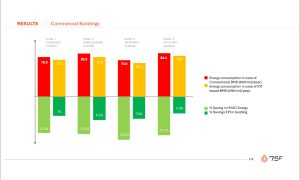Brands and consumers want to know the origin of the food or medicine they consume. This means that the supply chains must provide more traceability and transparency in the process.
India is one of the fastest growing economies, the largest producer of agri-based products, the second largest consumer market, and, not surprisingly, is leading the Cold Chain market growth globally. The recent trends of quick commerce, DNC, and changes in consumer preference further accelerate the need for the cold chain to be an integral part of a brand’s fulfilment strategy.
While the growth is encouraging, the fact is that the Cold chain is yet to reach a large part of India. Government policies, infrastructure development, innovation, and profitability encourage several players to foray into the cold chain business. However, for India to make it big in the cold chain market, we need to think differently and perhaps leave behind some traditional aspects of the cold chain and adopt the newer ones. Here is a way forward for the cold chain businesses in India that will help us punch above our weight. As we call it, welcome to cold chain 2.0.
Cold chain is not equal to trucking business or logistics
When we hear the word supply chain or cold chain, the first thing that comes to mind is a bunch of trucks and transportation. Sure, they play a part, but there is much more to a cold chain than transportation.
Companies must adopt a mindset of delivery fulfilment under three key aspects
- Viable: Are our costs and the costs to the customer economic and optimised?
- Reliable: Are we delivering the product, retaining 100 percent integrity and on time?
- Sustainable: Are we using sustainable fulfilment with minimal food wastage, carbon footprint, and fuel usage?
Inherently, Cold chain businesses have more responsibility than just transporting the products. A few companies have started thinking about sustainability, and we anticipate several more will follow.
The death of dry ice
Filling a truck with dry ice and transporting products is not a Cold chain. Dry ice has several harmful effects on the environment and on the humans who handle and consume products transported using one. Cold chain businesses need to think beyond dry ice and adopt newer technologies that maintain the precision temperature required for the product to retain its quality.
Agile chains are here to stay
Most brands have adopted the omnichannel or Direct to Consumer (D2C) approach to fulfil customer orders. The proliferation of instant delivery modes meant that the brands had to modernise and dynamically optimise their supply chain. The cold chain operators must adapt to this new way of fulfilment as there will not be too much inventory stored at the retail level. The latest technologies and innovations in the cold chain must allow the brands to enable frequent realisation, compartmentalising the units such that multiple fulfilments can happen in minimal trips.
Phygital approach to Cold Chain
Brands and consumers demand that they know the origin of the food or medicine they consume. This means that the supply chains have to provide more traceability and transparency in the process.Cold chain businesses traditionally thought about their business as physical infrastructure dependent. However, the new-age cold chain will have to be more flexible and blend it with digital making it a Phygital approach.
IoT has already taken off a big way to provide real-time data to cold chain providers to manage the precision temperature required for the products.
AI/ML: AI will lead the way for automated temperature management as frequent deliveries require the temperature to be adjusted based on the product type and weather.
Blockchain: Blockchain tracks back into all the supply chain phases and provides the consumers with complete details from origin to fulfilment.
Digital technologies enhance the viability, reliability and sustainability of the fulfilment, and cold chain businesses must invest more in this area to complement the physical infrastructure.
3PL to 5PL: India has already seen a shift from the simple reefer trucking model to 3PL services, where logistics companies are more integrated with the storage and movement of goods – however, the evolving models will need them to be much more agile and integrated to ensure demand fulfilment.
Therefore, cold chain companies need to evolve into full-stack supply chain providers, or 5PL, to cope with the future requirements of brands. This required them to build the requisite infrastructure, partnerships, and technology to cater to needs ranging from primary transport to last-mile home delivery.
Conclusion
Cold chain is quickly becoming integral to a brand’s product roadmap. Brands have started integrating the complex chain strategy and involving the cold chain solution providers during the product design. Here is where cold chain providers’ role is changing from being an infrastructure provider to a solution provider. The cold chain providers must understand the product dynamics, such as design, consumer needs, packaging and temperature requirements, and then offer a solution that best fits the need. We live in a world where customer loyalty is hard to earn and even harder to retain. Cold chain plays a significant role in acquiring and retaining that loyalty.
Cookie Consent
We use cookies to personalize your experience. By continuing to visit this website you agree to our Terms & Conditions, Privacy Policy and Cookie Policy.















